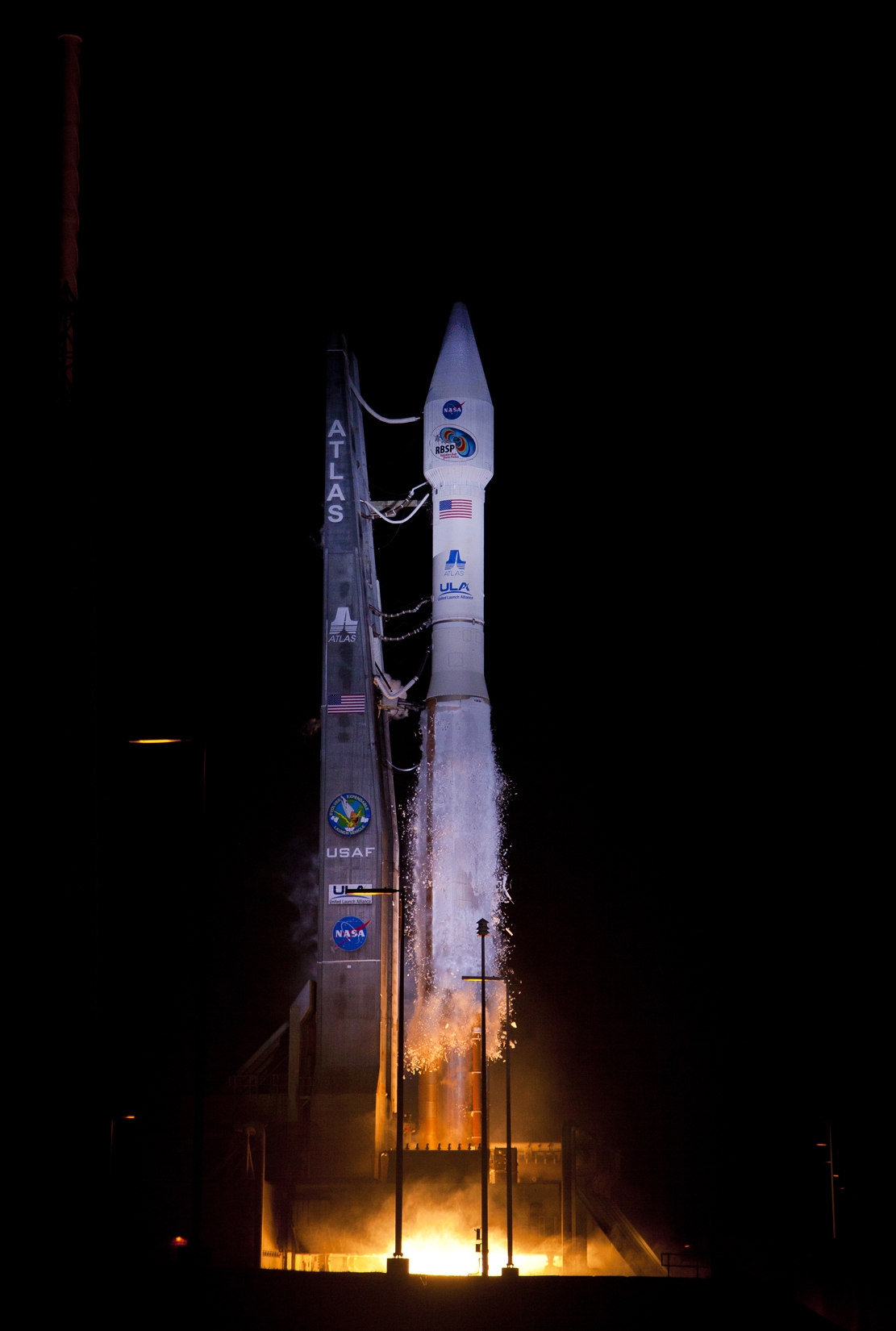The Radiation Belt Storm Probes (RBSP), after one delay and two scrubbed attempts to launch, lifted off of Space Launch Complex 41 at NASA’s Kennedy Space Center at 4:05am this morning, right at the opening of its launch window. The two spacecraft, RBSP-A and RBSP-B, were stacked one on top of another, in the nose cone faring of an Atlas V rocket with a Centaur second stage booster to lift the two spacecraft into their final orbits.
It is RBSP’s mission to explore the trapped radiation belts, also known as the Van Allen Belts named after James Van Allen, an early pioneer in space science and exploration from the University of Iowa. Dr. Van Allen first predicted the existence of bands of trapped solar wind particles within Earth’s magnetosphere and his prediction was verified with our first mission to space, Explorer 1, for which Dr. Van Allen was the Principle Investigator.
You can find out more about the Van Allen Belts and the Radiation Belt Storm Probes at http://rbsp.jhuapl.edu/.

